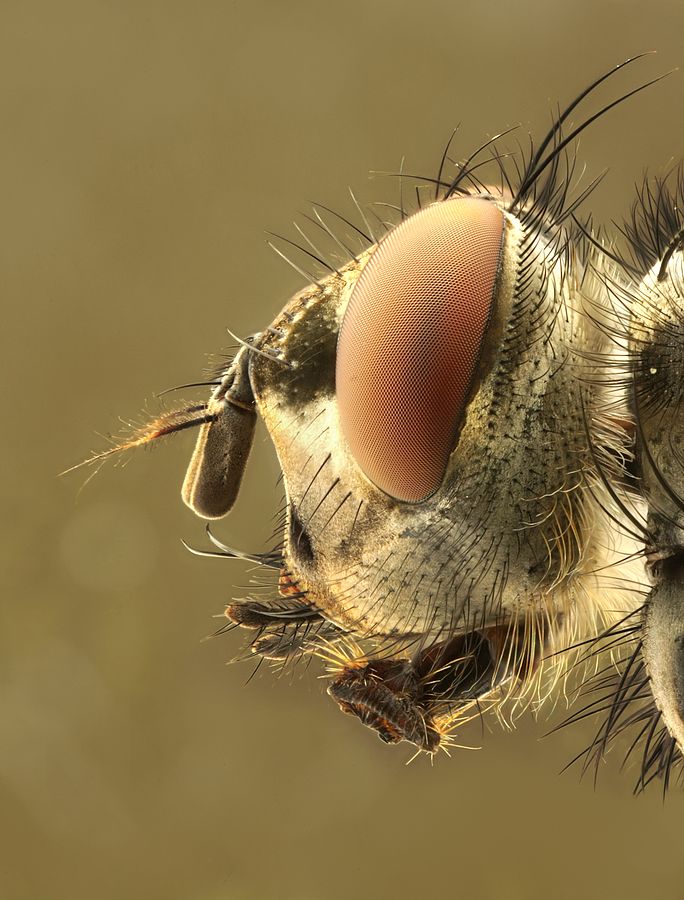 The Canon MP-E 65mm f/2.8 1x – 5x Macro Lens is an amazing instrument. Using it may be a challenge. The following are some cautions.
The Canon MP-E 65mm f/2.8 1x – 5x Macro Lens is an amazing instrument. Using it may be a challenge. The following are some cautions.
The working distance between the front lens element and the subject drops from 3.9″ to 1.6″ as you crank the magnification up from 1x to 5x. You will need to be very close to your subjects to use the additional magnification.
The lens is advertised as an f/2.8. Magnification reduces the indicated f-stop by an amount that depends on the degree of magnification. When selecting an indicated maximum f-stop of f/2.8, at 1x the effective f-stop is f/5.6. This drops from f/5.6 to f/22.4 with increasing magnification between 1x and 5x. To gain some additional depth of field, you will want to decrease the indicated f-stop from f/2.8. An indicated f-stop of f/16 results in an effective f-stop of f/96 at 5.0x magnification. The best sharpness, however, is between f/5.6 and f/8. The lens becomes more soft below and above those limits. This provides you with a trade-off to deal with: more light versus larger depth-of-field versus sharper images.
 With the small effective f-stops, you’ll need to provide additional light, i.e. a flash. However, a general purpose shoe-mounted flash may not work very well. The lens itself can get in the way of a shoe-mounted flash’s beam pattern, shadowing the subject (especially at the smaller minimum working distances of as little as 1.6″). Lens-mounted twin flashes for macro should be investigated.
With the small effective f-stops, you’ll need to provide additional light, i.e. a flash. However, a general purpose shoe-mounted flash may not work very well. The lens itself can get in the way of a shoe-mounted flash’s beam pattern, shadowing the subject (especially at the smaller minimum working distances of as little as 1.6″). Lens-mounted twin flashes for macro should be investigated.
Lastly, the depth-of-field (DOF) is extremely narrow. DOF ranges from 2.24mm (1x, f/16) to 0.048mm (5x, f/2.8). 0.048mm (2/1000″) is too narrow, you say? At 5x and f/16, the DOF increases to a relatively fat 0.269mm! That is 1/100″, by the way. That’s about 1/10 of the diameter of a grain of rice. You’ll want to consider focus-stacking if you want more than one slice of your subject to be in focus.
But, this is the kind of image you can produce! This head of a fly (Calliphoridae) is focus-stacked due to that pesky DOF issue mentioned above.

